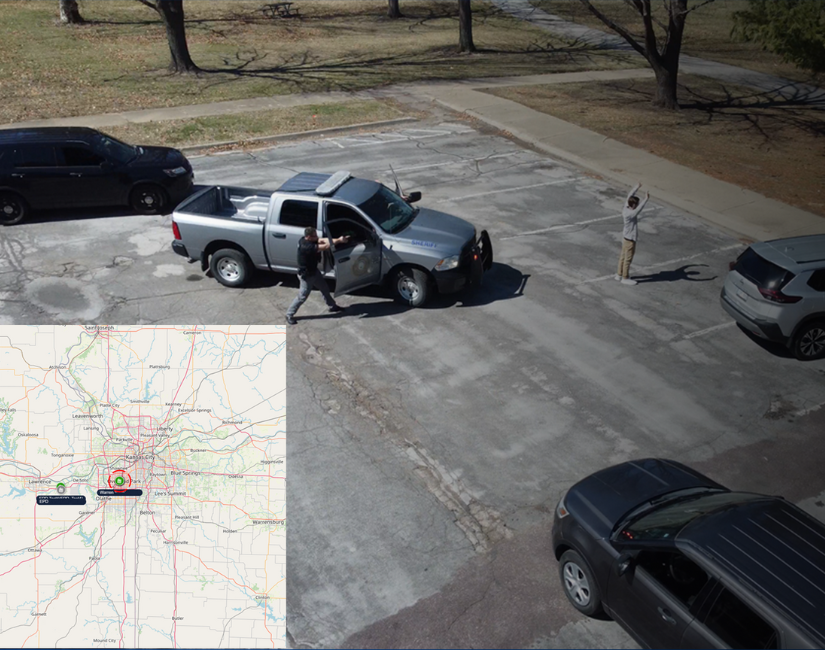It is now very common for law enforcement agencies across the United States to have body cameras and in-car video systems for their patrol vehicles. In 2016, the U.S. Department of Justice reported that 49 percent of all U.S. general-purpose law enforcement agencies had body-worn cameras (BWCs) but about 70 percent were using dashboard cameras. This number has continued to grow in the last seven years.
In-car video systems with state-of-the-art dashboard cameras and audio functions have become an asset for law enforcement professionals. In-car video systems work to enhance accountability and transparency to establish a higher level of trust between law enforcement officers and their community.
Aid in Accountability
Across the nation, public outcry has demanded accountability for all levels of law enforcement. We know that agencies and their officers want to provide the accountability their citizens desire, but delivery can sometimes be a challenge. However, with the addition of video and audio recordings via body-worn cameras and dashcams, law enforcement professionals can provide that accountability.
In-car video systems ensure officers are always recording when needed. There’s no guesswork after an incident about how the situation transpired, what was said and done is captured and recorded. An accurate timeline and transcript can be accessed and reviewed. Video footage can be used for training, court proceedings, and public transparency.
Enhance Transparency
Transparency, while increasingly important to the public, can also play an integral role for law enforcement officers in certain issues. For example, as early as 2007, the United States Supreme Court accepted dash cam video as evidence in the case of Scott v Harris 550 U.S. 372 (2007).
The case involved a Georgia deputy who was sued for the injuries of a speeding, reckless driver. The deputy used the PIT maneuver to stop a dangerous chase. The speeding vehicle crashed and the driver, Harris, sustained serious injuries. Harris sued with the claim that the PIT maneuver was an excessive force that violated the Fourth Amendment.
The Federal District Court and the Circuit Court of Appeals sided with Harris originally. However, Deputy Scott’s petition to the Supreme Court was accepted and upon review, the decision was overturned based on the evidence from the in-car video system.
The video clearly showed Harris had driven at reckless speeds, weaving, and putting the public in danger. Deputy Scott had done what was needed in this dangerous situation. Based on this case, lower courts must now utilize the available reliable video evidence for resolving qualified immunity claims.
Dash cams as well as body-worn cameras are essential tools for irrefutable, fact-based evidence that can provide an officer with total transparency for their actions in the line of duty.
Help to Build Trust
The IACP (International Association of Chiefs of Police) states that “Accurate, transparent reporting of crime data and use of force incidents is an important way police agencies can build trust and confidence within the communities they serve.”
Video from law enforcement vehicles and body worn cameras can help citizens better understand the complexity police face in various situations. Citizens want to trust their police officers and when they can see what actually happened during an incident it helps eliminate confusion and misunderstanding. It’s easier to interpret a situation when you can see it, and that helps grow the community’s trust and confidence in law enforcement.
Kustom Products to Assist with Police Accountability
Kustom products like Argus ICV and Argus BWC are essential tools for law enforcement agencies when it comes to accountability, transparency, and building community trust. Argus ICV’s HD Dual View Camera offers both wide-angle and telephoto views at the same time in 1080p for exceptional coverage and detail. In addition, its telephoto lens can pivot to capture the angle needed at the most critical moment.
Footage from Argus ICV can easily be reviewed, used for training, and classified on its Android-powered tablet. Questions are answered and details are clear with the interface that allows for multiple-feed views as well as single-cam. Argus ICV and Argus BWC can be paired together for the ultimate combo in safety and accountability. Additionally, Argus Data Vault system allows data from these technologies to be stored and maintained for future consideration and use.
Contact us today for more details about the Argus ICV and our other video systems.

